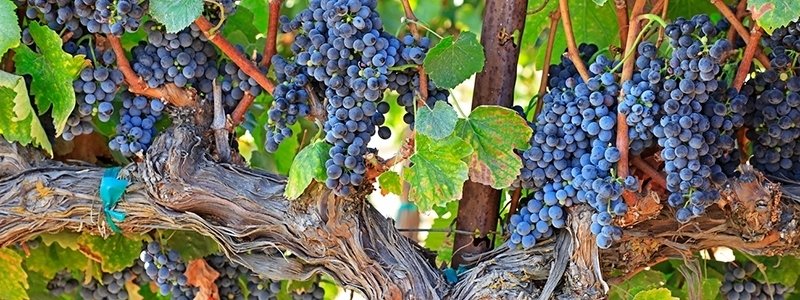Full Circle

At Kenneth Volk Vineyards we believe that consistently complex, interesting wines are achieved through comprehensive planning and execution in the vineyard. That's followed by careful attention and diligent follow-up in the winery. We believe the winemaking process should support and enhance the excellent flavors of well-tended winegrapes.
Winemaking in the Vineyard
Although we have a small estate vineyard, the majority of our fruit is purchased from the exceptional growers with whom we work. In most cases, we participate directly in the management of the fruit we're buying, as it grows. We can create complex flavors in the fruit by using different techniques even within a single vineyard block.
Rootstock selection, vine density, trellis design, irrigation, shoot density, canopy management so many factors are at play before the fruit is even harvested. But each of these factors and how they intertwine play an important role in the finished wine.
We literally create great wines by manipulating the potential chemistry of the growing fruit.
Instead of seeking whatever is currently considered the best in choosing grape clone, rootstock and trellising system. At Kenneth Volk Vineyard, our goal is to create multifaceted wines. So instead of farming everything alike, we combine many of the best practices, materials and vines available. The differences produce different flavors that blend to create a spectacular, multidimensional wine.
For instance, during harvest we can make a more interesting wine by picking fruit from the same vineyard on multiple harvest dates. This allows us to pick fruit at different maturity levels that will have diverse flavors. The first time, we might pick for low pH and higher TA and fresh fruit aromatics. Then we'd come back a week or more later and pick for physiological and ripeness and mature flavors.
Just as a rich stew or curry creates a more vivid culinary experience when it includes a complex combination of ingredients that harmonize, we seek to bring together complementary flavors for a richer wine experience. But in our case, the cooking starts right in the vineyard, by varying our viticultural practices.
Winemaking in the Winery: Winery Protocols Affecting Wine Quality
Just as there are many decisions to be considered in the vineyard, the many different decisions made in the winery will affect how a wine tastes in the bottle. From start to finish, our primary goal is to support and build on the complexity of flavors produced in the vineyard.
We apply this goal to decisions made at all phases of the process. These are just a small sampling of the decisions we face:
- Harvest timing criteria
- Field-sorting
- Harvest containers
- Post-harvest storage and delivery systems
- Winery sorting
- Fermentor type
- Size-to-width ratio of fermentor
- Temperature control method
- Degree of destemming
- Crushing
- Whole-cluster/whole berry ratio
- Pre-fermentation holding period and temperature
- Yeast selection native or cultured yeast
- Rate/timing of inoculation
- Cap management techniques
- Cooperage selection
Ken, an innovating traditionalist, and his team use progressive techniques to minimize handling of fruit and wine. Let's explore how his methodology plays out by looking at the single choice of yeast strains.
Ken Volk is a yeast connoisseur. Don't even ask him about it unless you're ready for a 30-minute answer. The bottom line is: given the impact of yeast on a wine's flavor, we don't leave it to chance. We want to make the decision instead of accepting what comes in from the vineyard.
Different metabolic byproducts create different flavors. For aromatic whites (Malvasia, Viognier) we choose yeasts with high beta-glucosidase activity that frees up bound terpenes, enhancing varietal aromas. For barrel-ferment Chardonnay, we take advantage of a diversity of yeasts across a given vineyard lot to build structure, aromatics, and mouthfeel. For exceptionally high brix reds, yeast inoculation can resemble a baseball game; a dependable, charismatic opening pitcher and then a strong, ferocious closing pitcher to finish the game. Some yeasts produce lower alcohol.
Some require lots of nutrients. Some create estery flavors, while others are neutral. Some create a creamy mouthfeel. Some are elegant and delicate.There's a huge potential to impact the wine with this decision, and there's the potential to create complexity by, again, mixing it up. For a single lot of Chardonnay we might employ 6 different yeast strains, each to produce a different effect.